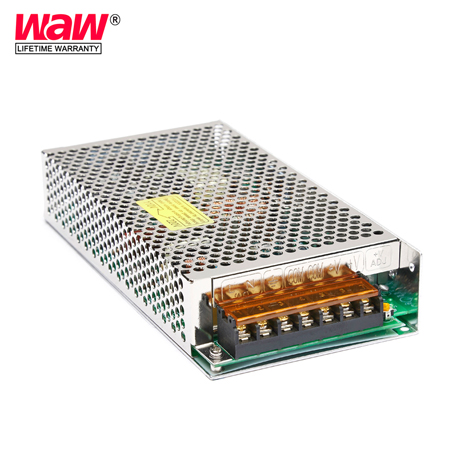
Wenzhou wode electrical co.,LTD
Tel: +86 577 62602806Phone: 86-18106781616E-mail: wode@wodeps.com

Tel: +86 577 62602806Phone: 86-18106781616E-mail: wode@wodeps.com

Date:2021.05.14 Views:3701
Linear power supplies are designed for low noise and are often considered quiet because there is no high frequency switching. They are used anywhere excellent regulation and/or low ripple is required as well as low EMF and excellent transient response. Linear power supplies can only step down the input voltage to produce a lower output voltage. Linear power supplies typically use a large transformer to step down the voltage from the AC line to a much lower AC voltage, and then use a series of rectification circuits and filtering processes to produce a very clean DC voltage. The drawbacks are weight, size and low efficiency.
Some examples of applications that may require linear power supplies are communications equipment; medical equipment, low noise amplifiers; signal processing; data acquisition including sensors, multiplexers, A/D converters, sample and hold circuits, automatic test equipment; laboratory test equipment; control circuits; computers and industrial applications.

Switching Power Supply
Switching power supply is designed for high efficiency and small size. They incorporate a switching regulator to efficiently convert electrical energy. Switching DC power supplies regulate the output voltage through a process called pulse width modulation (PWM). The use of PWM allows the use of various topologies such as buck, boost, forward converter, half-bridge rectifier or flyback, depending on the output power requirements. the PWM process generates some high frequency noise, but allows the switching power supply to be built with very high power efficiency and a small form factor. With a good design, switching power supplies can have excellent load and line regulation. They can step up or step down the input voltage to obtain the desired output voltage. Switching power supplies have higher efficiency than linear regulators because the switching transistors dissipate very little power when they act as switches. However, this switching generates noise, which can be reduced by filtering.
If your equipment is for international use, switching technology can work almost anywhere in the world, whereas linear power supplies must be manually adjusted to work with foreign grids. Other examples of applications that favor switching power supplies are: general purpose power supplies for R&D, manufacturing and testing, high power/high current applications, some communication systems, mobile stations, some network equipment, electroplating, anodizing, electroforming, electrophoresis, electrolysis, waste treatment, hydrogen generators, fuel cell applications, DC motors, aviation and naval/yacht applications.
In today's electronics, switching power supplies are often the preferred choice due to cost, size and efficiency. The decision to use a linear or switching power supply depends on the application and overall system requirements.
The above information is provided by the switching power supply supplier.